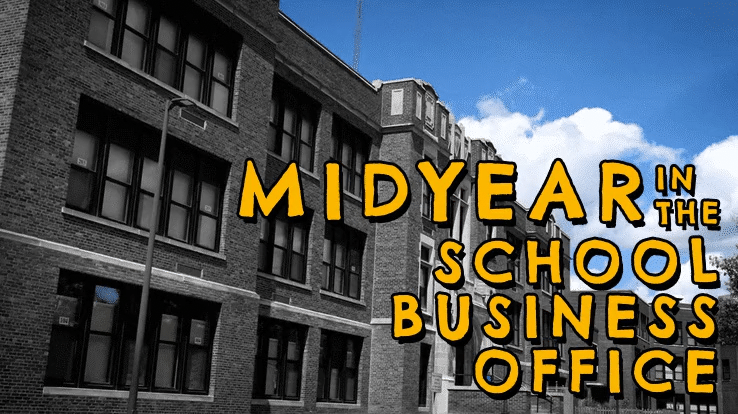
High-performing candidates are no longer scanning the classifieds with a red pen, nor are they sending out optimistic resume packages, hoping for the right opportunity to fall into their laps. Explore six ways technology can help capture the attention of applicants, move them seamlessly through the recruitment process, and give them a positive first impression of your district.
1) Smarter keyword searches
Artificial intelligence brings new and improved capabilities to the keyword search, and a mass of AI startups are developing tools especially designed for the recruiting process. Machine learning has grown past the simple keyword searches of the past, which essentially looked for exact language, leaving potentially great applicants in the dust if they didn’t supply the magic word. Instead, artificial intelligence can now look at a list of former candidates’ credentials, the job description, and even existing employees’ skills to determine which applicants may be a good match based on much more than simply arranging the right buzzwords.Another exciting component of artificial intelligence offers the capability to reduce unconscious bias and level the playing field. However, the IT adage “garbage in, garbage out,” applies in a big way. It’s crucial for the person who initiates the AI search to be deliberate about the language within each example candidate and job description fed into the machine. Algorithms aren’t without flaws—if one begins with deeply biased source material, it will honor and expand the bias, rather than quashing it.
2) Future-ready job descriptions
As positions evolve, it’s time to give job descriptions a glow-up. These documents are often overlooked, despite being the cornerstone of the employment agreement, employee reviews, and career trajectory. If your job descriptions have been gathering dust, double-check these areas are represented:- Technology: Expect candidates to have a strong foundation in the basics of computing, which will make software rollouts and additional training easier.
- Communication: Spell out written and verbal communication requirements, since these soft skills are often overlooked and very hard to teach.
- Professional development: How are candidates expected to continue their training? How will they be supported?
- Benefits: Be creative—in addition to compensation packages, what’s great about working within your culture?
- Straightforward language: Skip the zany, subjective superlatives. It’s hard to quantify what a “rock-star unicorn media specialist” consists of.
- Work environment: Update details about working conditions, physical requirements, and reporting structure.
Remember, the goal is to find someone who is a good fit going forward—not a checklist of what previous employees did. Finally, take the opportunity to reduce bias in job descriptions and postings as well. Build inclusivity through a thoughtful and deliberate review process—lean on your colleagues for their eagle-eyed reviews. Textio, a service which identifies biased language in job descriptions, says recruiters using their tools could see up to 25% more candidates qualified to interview.
3) Communication doesn’t have to be stuffy…
Text messaging with candidates: Yikes or yay?It’s understandable to hesitate at this prospect, but the pros add up. Communication is quick, but still editable, written, and documented, which is great for keeping records. Candidates are used to using this form of communication, too. They may appreciate the convenience a quick text offers when setting up follow-up interviews or asking clarifying questions.
Be sure to identify yourself and treat a text like any other recruitment communication, rather than an informal chat.
4) …but make sure your audit trail is rock-solid
Stay compliant without amassing cabinets full of paper.One of the greatest shifts in recruitment management has been the advent of electronic documentation. Human resources information systems make it possible to scan and shred documents. Rather than keeping job postings, interview schedules, applications, interview questions, assessment results, references, and assorted notes under lock and key in precious storage space for a year, opt to password-protect a digital version instead.
5) Make it self-service
Is the in-person resume drop really valuable? The jury may still be out on that question, depending on your culture, but independence and self-motivation is admirable in any applicant. Make these traits part of your hiring process by choosing an online applicant portal. Good mobile access to your careers page is absolutely crucial as well—back in 2015, the Pew Research Center found 28% of all Americans searched for jobs using a mobile phone, including 53% of adults aged 18–29.6) Don’t dismiss social media
By now it should be clear social media is more than a timewaster for kids, but not all social media services are created equal for recruiting. You’re more likely to find a strong applicant with a presence on LinkedIn or Twitter, rather than Facebook or Instagram (unless, of course, you’re hiring a communication professional—then you’ll be looking for a strong presence on all of these platforms).A word to the wise: avoid the temptation to only use social media as a way to rule candidates out or catch them in unflattering behavior. Instead, look for someone who’s willing to create a diverse network and learn from those connections. Leaders who build and nurture a strong network on social media (in addition to IRL) benefit, because they might just have the perfect candidate in mind before the job is even posted. Post your job openings and ask your network to share open opportunities for maximum visibility—just make sure there’s a seamless link to your careers page or application platform included.
To candidates, the recruitment techniques you choose are a great first impression of your culture and brand. Make the call based on what fits your district’s style, and you’re well on your way to attracting the talent your team needs.
Follow-up resource: Where are candidates looking?
High-performing candidates are gathering in these three places. Are you there to meet them?WHAT'S NEXT FOR YOUR EDTECH? The right combo of tools & support retains staff and serves students better. We'd love to help. Visit skyward.com/get-started to learn more.

|
Erin Werra Blogger, Researcher, and Edvocate |
Erin Werra is a content writer and strategist at Skyward’s Advancing K12 blog. Her writing about K12 edtech, data, security, social-emotional learning, and leadership has appeared in THE Journal, District Administration, eSchool News, and more. She enjoys puzzling over details to make K12 edtech info accessible for all. Outside of edtech, she’s waxing poetic about motherhood, personality traits, and self-growth.




